The textural characteristics of grains and snack food are very important as an indicator of quality.
Certain food products, like grains and cereals, including rice, pasta, and couscous, need to be cooked before they are consumed, so they must have both the correct texture in their raw form and the correct cooking instructions to produce a good texture after cooking in order to be considered a quality finished product.
The texture of snack foods, which are often made of cereals and grains, is complex. Consumers expect snack foods to be crispy and crunchy, with products in which these attributes are missing being thought of as low quality or stale snacks.
Most of the leading rice processors in North America rely on some kind of Mecmesin system to evaluate the consistency of their products (Figure 1).
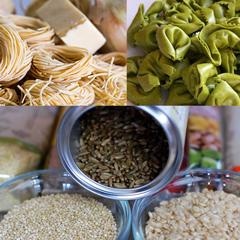
Figure 1. Every major rice processor in North America uses a Mecmesin system of some kind to measure the consistency of their products.
Test Methods for the Grains and Snacks Sector
The evaluation of the texture of grains and snacks based on snapping and fracture properties involves capturing changes that occur rapidly, or high-frequency responses.
This can be efficiently done with the MultiTest-i system” to “This can efficiently be done with an OmniTest universal testing machine. There is a lot of variation in snack foods, so different testing methods are required for different forms.
Bulk analysis
The bulk analysis is a rapid, simple, and popular way of testing snack foods as it enables testing of large sample sizes with minimum replications. A modified version of the Kramer Shear cell (the Model CS-2) is used for bulk analysis. This model is characterized by thinner blades and smaller grid openings, facilitating the measurement of smaller-sized cereals and grains.
In bulk analysis, the sample is loaded in terms of either volume or weight, with the maximum or peak force applied to obtain the results within a few seconds.
The results provided by Kramer Shear testing (Figure 2) are in good agreement with the texture interpretations obtained from the sensor panel. The firmness of pasta, hardness of pretzels, and comparison of white and brown rice can be done through bulk analysis.
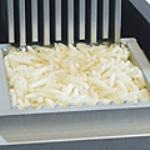
Figure 2. Rice bulk analysis
Compression
The firmness and stickiness of a product can be evaluated by subjecting it to compression and retraction of a platen.
Adhesive properties can be predicted by analyzing the release of starch when the product is cooked. Cooking time recommendations of pasta are based on its firmness. Comparing the softness of whole-wheat pasta to white pasta, and analysing its stickiness, can be done using compression tests (Figure 3).
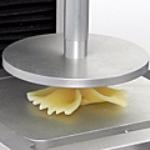
Figure 3. Compression testing of pasta
Penetration and puncture
The hardness of many types of snack foods, from potato chips to cookies, can be evaluated by penetration and puncture testing. In this technique, a probe is inserted into the product until fracture or breakpoint (Figure 4).
The crispiness of snacks and the ability of their packaging to withstand damage during transit can be evaluated using this technique.
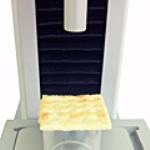
Figure 4. Penetration and puncture testing
Snap, Bend, and Break
The crispiness of crunchy and brittle snacks can be assessed through snapping and breaking tests. In this method, the peak force and the distance between the sample contact point and the fracture point are measured (Figure 5).
Ideally, the sample should bend initially. This method can be used to compare stale products against fresh ones, evaluate the staling of snacks and analyze crispness and hardness of snacks.
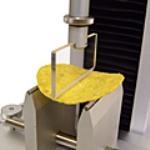
Figure 5. Snap, bend, and break testing

This information has been sourced, reviewed and adapted from materials provided by Mecmesin.
For more information on this source, please visit Mecmesin.